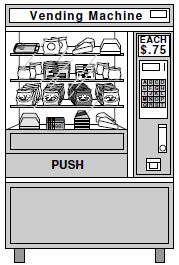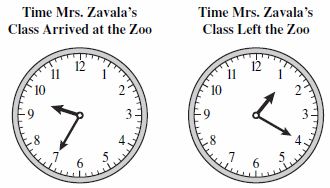General Information
Test Item Specifications
Students will compare, contrast, and convert units of measure within the same measurement system (i.e., either customary or metric).
Items may include linear measure, weight/mass, time, or elapsed time (to the nearest minute).
Items will not include time zones.
Items may include either analog or digital clocks but not both within the same item.
Items will not include the use of proportions or equivalent ratios to convert between different measurement systems.
Items may include up to two conversions within the same system of measurement.
Items may include multiplying or dividing by multiples of ten.
Items involving the metric system may include decimals.
Items may require students to add and subtract measurements.
Items must be set in a real-world context.
Items will not require students to divide by decimals.
Items that are set in real-world context may use length and width as dimensions as well as base and height as dimensions.
Responses may include decimals up to five digits
(e.g., 250 centimeters = 2.5 meters).
Sample Test Items (2)
| Test Item # | Question | Difficulty | Type |
| Sample Item 1 | The students in Mrs. Zavala’s fifth-grade class went on a field trip to the zoo. They arrived at the zoo in the morning and left the zoo in the afternoon. The clocks below show the time when the class arrived at the zoo and the time the class left the zoo.
|
N/A | MC: Multiple Choice |
| Sample Item 2 | The vending machine shown below can hold up to 24 bags of pretzels. Each bag contains 1 ounce of pretzels. What is the total number of pounds of pretzels in 24 bags of this size?
|
N/A | GR: Gridded-Response |
Related Resources
Lesson Plans
| Name | Description |
| Storage for Storage | In this MEA, 5th Grade students will work in teams to determine a procedure for ranking Storage Sheds for a construction company that is moving to a new facility to purchase. Students will need to calculate the square feet and cubic feet of space for the Storage Shed, make decisions based on a table of data, and write a letter to the client providing evidence for their decisions. Model Eliciting Activities, MEAs, are open-ended, interdisciplinary problem-solving activities that are meant to reveal students’ thinking about the concepts embedded in realistic situations. MEAs resemble engineering problems and encourage students to create solutions in the form of mathematical and scientific models. Students work in teams to apply their knowledge of science and mathematics to solve an open-ended problem while considering constraints and tradeoffs. Students integrate their ELA skills into MEAs as they are asked to clearly document their thought processes. MEAs follow a problem-based, student-centered approach to learning, where students are encouraged to grapple with the problem while the teacher acts as a facilitator. To learn more about MEAs visit: https://www.cpalms.org/cpalms/mea.aspx |
| Give An Inch, Take A Foot | In this activity students practice measuring techniques by measuring different objects and distances around the classroom. They practice using different scales of measurement in metric units and estimation. |

 yards
yards